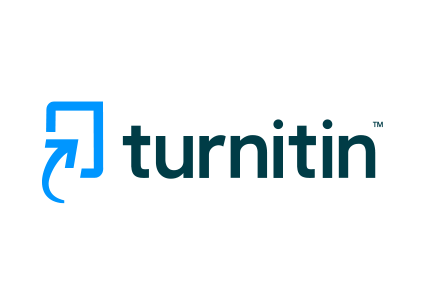Chandler Bing's Sarcasm in the TV Series Friends: A Pragmatic Analysis
Thomas Joko Priyo Sembodo(1*), I Dewa Putu Wijana(2), Aris Munandar(3)
(1) Department of Laguages and Literature, Universitas Gadjah Mada
(2) Department of Laguages and Literature, Universitas Gadjah Mada
(3) Department of Laguages and Literature, Universitas Gadjah Mada
(*) Corresponding Author
Abstract
This study investigates the use of sarcasm by the character Chandler Bing in the American sitcom Friends, focusing on Seasons 1 through 3. Through a pragmatic lens, the analysis identified 134 sarcastic utterances and classified them based on the Gricean conversational maxims they flout as well as the communicative functions they serve. The findings reveal that the maxim of quality is the most frequently violated, with 91% of sarcastic utterances exhibiting a deliberate contrast between literal meaning and intended implication. Additionally, sarcastic functions are grouped into three categories: negative evaluation, positive evaluation, and other purposes. While no utterances were found to express positive evaluation, 36% delivered negative assessments of the hearer, and 64% fulfilled other functions, such as teasing, expressing frustration, or asserting social bonds. The study underscores the complexity of sarcasm as a pragmatic phenomenon and highlights its central role in character development and humor in scripted media. Limitations include the use of a single source and broad functional categories, which future research may refine by incorporating more diverse datasets and nuanced classifications.
Keywords
Full Text:
PDFReferences
Attardo, S. (2002). Irony as relevant inappropriateness. Journal of Pragmatics, 34(6), 795–821. https://doi.org/10.1016/S0378-2166(01)00039-1
Attardo, S. (2002). Humor and irony in interaction: From mode adoption to failure of detection. In L. Anolli, R. Ciceri, & G. Riva (Eds.), Say not to say: New perspectives on miscommunication (pp. 159–179). IOS Press.
Attardo, S. (2000). Irony markers and functions: Towards a goal-oriented theory of irony and its processing. RASK: International Journal of Language and Communication, 12, 3–20.
Brown, P., & Levinson, S. C. (1987). Politeness: Some universals in language usage (2nd ed.). Cambridge University Press.
Bryant, G. A., & Fox Tree, J. E. (2005). Is there an ironic tone of voice? Language and Speech, 48(3), 257–277. https://doi.org/10.1177/00238309050480030101
Bryant, G. A. (2010). Prosodic contrasts in ironic speech. Discourse Processes, 47(7), 545–566. https://doi.org/10.1080/01638530902959476
Camp, E. (2012). Sarcasm, pretense, and the semantics/pragmatics distinction. Nous, 46(4), 587–634. https://doi.org/10.1111/j.1468-0068.2011.00756.x
Claridge, C. (2010). Hyperbole in English: A corpus-based study of exaggeration. Cambridge University Press.
Clark, H. H., & Gerrig, R. J. (1984). On the pretense theory of irony. Journal of Experimental Psychology: General, 113(1), 121–126. https://doi.org/10.1037/0096-3445.113.1.121
Colston, H. L. (2007). On necessary conditions for verbal irony comprehension. In R. W. Gibbs Jr. & H. L. Colston (Eds.), Irony in language and thought: A cognitive science reader (pp. 97–134). Lawrence Erlbaum Associates.
Cutting, J. (2002). Pragmatics and discourse: A resource book for students. Routledge.
Deliens, G., Antoniou, K., Clin, E., Ostashchenko, E., & Kissine, M. (2018). Context, facial expression and prosody in irony comprehension by foreign language learners. Journal of Pragmatics, 133, 12–32. https://doi.org/10.1016/j.pragma.2018.05.008
Dews, S., & Winner, E. (1995). Muting the meaning: A social function of irony. Metaphor and Symbolic Activity, 10(1), 3–19. https://doi.org/10.1207/s15327868ms1001_2
Dynel, M. (2016). “I’ll be there for you!”: On participation-based humour in the TV series Friends. Humor, 29(4), 619–640. https://doi.org/10.1515/humor-2016-0057
Dynel, M. (2011). “I’m not a scientist but…”: Features of ironic utterances in conversational contexts. Lingua, 121(10), 1651–1669. https://doi.org/10.1016/j.lingua.2011.05.001
Dynel, M. (2011). A pragmatic perspective on humorous discourse. Journal of Pragmatics, 43(12), 3007–3021. https://doi.org/10.1016/j.pragma.2011.06.004
Filik, R., Turcan, A., Ralph-Nearman, C., & Pitiot, A. (2015). Sarcasm and emotional processing: Behavioral and eye movement evidence. Cognition and Emotion, 30(4), 654–667. https://doi.org/10.1080/02699931.2015.1027666
Gibbs, R. W. (1994). The poetics of mind: Figurative thought, language, and understanding. Cambridge University Press.
Gibbs, R. W. (2000). Irony in talk among friends. Metaphor and Symbol, 15(1–2), 5–27. https://doi.org/10.1207/S15327868MS151&2_2
Gibbs, R. W., & Izett, C. D. (2005). Irony as persuasion. Metaphor and Symbol, 20(1), 55–77. https://doi.org/10.1207/s15327868ms2001_4
Grice, H. P. (1975). Logic and conversation. In P. Cole & J. L. Morgan (Eds.), Syntax and semantics: Vol. 3. Speech acts (pp. 41–58). Academic Press.
Grundy, P. (2000). Doing pragmatics (2nd ed.). Arnold.
Haugh, M. (2010). When is an email really offensive? Argumentativity and variability in evaluations of impoliteness. Journal of Politeness Research, 6(1), 7–31. https://doi.org/10.1515/jplr.2010.002
Holtgraves, T. (2005). Social psychology, cognitive psychology, and linguistic politeness. Journal of Politeness Research, 1(1), 73–93. https://doi.org/10.1515/jplr.2005.1.1.73
Kreuz, R. J., & Glucksberg, S. (1989). How to be sarcastic: The echoic reminder theory of verbal irony. Journal of Experimental Psychology: General, 118(4), 374–386. https://doi.org/10.1037/0096-3445.118.4.374
Kreuz, R. J., Kassler, M. A., & Coppenrath, L. (1991). The effects of lexical and contextual cues on the perception of verbal irony. Discourse Processes, 12(1), 23–33. https://doi.org/10.1080/01638539109544772
Kreuz, R. J., & Roberts, R. M. (1995). Two cues for verbal irony: Hyperbole and the ironic tone of voice. Metaphor and Symbolic Activity, 10(1), 21–31. https://doi.org/10.1207/s15327868ms1001_3
Lee, C. J., & Katz, A. N. (1998). The differential role of ridicule in sarcasm and irony. Metaphor and Symbol, 13(1), 1–15. https://doi.org/10.1207/s15327868ms1301_1
Pexman, P. M., & Zvaigzne, M. T. (2004). Does irony go better with friends? Metaphor and Symbol, 19(2), 143–163. https://doi.org/10.1207/s15327868ms1902_3
Recchia, H. (2021). The pragmatics of sarcasm and irony in popular television sitcoms. Language and Communication, 80, 50–62. https://doi.org/10.1016/j.langcom.2021.06.004
Rockwell, P. (2000). Lower, slower, louder: Vocal cues of sarcasm. Journal of Psycholinguistic Research, 29(5), 483–495. https://doi.org/10.1023/A:1026521813086
Utsumi, A. (2000). Verbal irony as implicit display of ironic environment: Distinguishing ironic utterances from nonirony. Journal of Pragmatics, 32(12), 1777–1806. https://doi.org/10.1016/S0378-2166(99)00111-2
Yus Ramos, F. (1998). Irony: Context accessibility and processing effort. Pragmalingüística, 5–6, 391–411.
Yus Ramos, F. (2000). On reaching the intended ironic interpretation. Pragmatics, 10(2), 237–255. https://doi.org/10.1075/prag.10.2.05yus
Yus Ramos, F. (1998). On relevance, irony, and deception. Pragmatics and Cognition, 6(1–2), 265–291. https://doi.org/10.1075/pc.6.1.14yus
Article Metrics
Refbacks
- There are currently no refbacks.
Copyright (c) 2025 Thomas Joko Priyo Sembodo, I Dewa Putu Wijana, Aris Munandar

This work is licensed under a Creative Commons Attribution-ShareAlike 4.0 International License.










